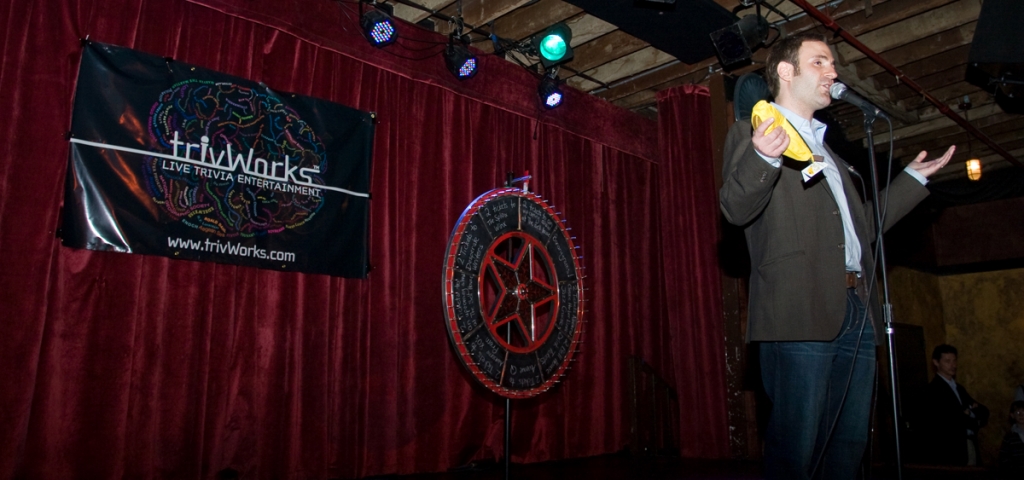One of the biggest opportunities for folks who want to make an impact through entrepreneurship is to tackle things that Corporate America has gotten wrong and so we’ve asked some of the best and brightest in the community to share examples of what Corporate America is getting wrong in their industries.
Lauren Brown-King

Ah, Corporate America—where buzzwords flow like free coffee, and ‘synergy’ is somehow both the problem and the solution. In both marketing and tech, one of the biggest missteps I see is the obsession with vanity metrics over meaningful impact. Companies love to celebrate ‘engagement’ and ‘impressions’ while completely ignoring whether their strategy is actually driving trust, credibility, and long-term business growth. Read More>>
Steve Jackson

This was a significant driver in my decision to own my own restaurant and operate it the way I believe creates long term success. I watched too many corporate groups focus quarter by quarter on “creating shareholder value” by making short term decisions with long term detrimental implications to the business. I looked on as they dramatically increased pricing during any traffic decline to help mitigate top line sales decline, cut product quality for cost savings/efficiency and cut labor impacting service and overall employee engagement. Read More>>
Brian Waters

The biggest thing I believe Corporate America gets wrong in the podcasting industry is the value of people. Sometimes there are people who are really creative, but may not have the traditional education or degree to show. But if you show them how to do the job, they can put their personal spin on a video or audio project that will serve the audience. Read More>>
Catherine Marben

In an industry defined by precision, trust, and artistry, Corporate America continues to miss the mark. The aesthetic injectable space—an arena I’ve spent years studying, refining, and mastering alongside some of the most respected names in the world—does not bend to the usual rules of business scalability. In fact, trying to force it into a traditional corporate mold often strips away everything that makes it effective. Read More>>
Robert Ancill

While the primary objective of this book is to present an in-depth and comprehensive collection of marketing tactics and strategies, I intend to use our “coffee breaks” to incorporate storytelling and highlight particularly effective approaches that are frequently overlooked. In our first coffee break, I will discuss one of the simplest, yet most impactful marketing exemplars I have ever encountered
Being a consultant, you meet many people and experience a whole range of scenarios. One that sticks out was a time when I was engaged to assess a chain of restaurants with the primary objective to assess how their offering aligned with emerging market trends, while also providing a financial analysis of their current performance and future forecasts based on scenario planning that adjusts their positioning to meet evolving consumer demand. Read More>>
Joshua Maddux

Corporate America tends to treat websites like digital billboards. Static. Pretty. Pointless. It’s the same mentality I’ve seen with big-budget teams—they throw money at branding, but forget the site is supposed to sell, not just exist.
I’ve seen multi-million-dollar companies hire flashy design agencies that hand them a gorgeous website… with zero strategy behind it. No lead funnels. No calls to action. Just a homepage that’s basically a monument to themselves. Then they wonder why it doesn’t convert. Read More>>
Megan Torres

Corporate America often treats photography as a commodity rather than a craft and artform—focusing on volume, uniformity, and speed over artistry, cultural relevance, and personal connection. In doing so, they miss the opportunity to tell real, resonant stories that move people and build brand loyalty. Read More>>
Allison Minutillo

We’ve been sold a lie: that readiness is a prerequisite for action.
We’re conditioned to believe that confidence must come first—that we have to feel ready before we step up, speak out, or lead. But science and experience tell us the opposite: action breeds confidence, not the other way around. Read More>>
David Jacobson

Corporate team building gets a bad rap. The intention is good, in that managers want to boost morale, improve communication, maximize productivity etc. However, just take one look at the expressions on peoples’ faces when they see “Team Building Activity” on the agenda at a conference or meeting – they are NEVER excited for these programs. Honestly, this reaction is deserved – most of the activities masquerading as “corporate team building” stink! Read More>>
Grace Bex

One of the biggest missteps Corporate America makes in the fitness industry is treating wellness like a factory—pushing out cookie-cutter programs and chasing numbers rather than real impact. Big box gyms often operate on volume. You’re either a barcode at check-in or a subscription that gets counted in monthly revenue, not a person with a story, a struggle, or specific needs. The focus tends to be on selling memberships, not building relationships. And for many women, that lack of connection is the exact reason they fall off their fitness journey in the first place. Read More>>


